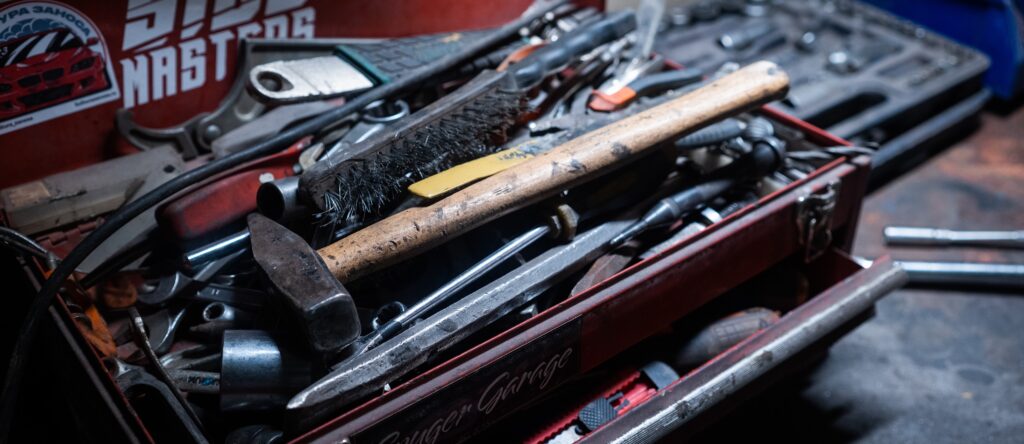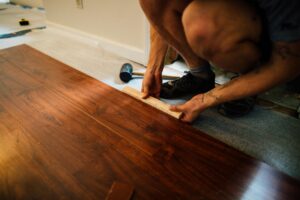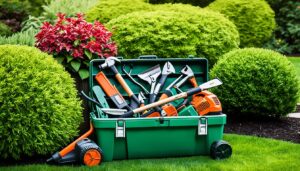
So you own a house! Now you need to take care of it! Every new homeowner needs a toolbox full of tools to deal with the occasional repair or installation. This could be something as easy as hanging a picture, or your first DIY project. No matter the size of the project, here is a list of 10 essential tools you should have in your toolbox.
1. Hammer
A good hammer will be used for many different tasks, from driving or removing nails, to putting stakes in the ground. Try to get a good size and weight as that will help do more of the work.
2. Screwdriver Set
There are different options for screwdriver sets. You can get a single screwdriver with interchangeable heads, or a set of many screwdrivers, each with its own head. If space is an option, the interchangeable heads take up less room, but they tend to get misplaced and you spend a lot of time looking for the right one. Just make sure whatever set you get has all of the popular types (flathead, Phillips) and multiple sizes of each as screws come in many different shapes and sizes.
3. Tape Measure
There are all sorts of occasions that you will need a tape measure. You may be hanging a picture and want it dead center, figuring out what size of couch can go in your new living room, or measuring how tall your youngest child is. Tape measures come in many sizes, just make sure it is long enough for the job you are doing.
4. Adjustable Wrench
Wrenches come in all sorts of styles and sizes as well. They are needed for all sorts jobs such as bike repairs, plumbing, building furniture, hanging TV’s on he wall and many more.
5. Pliers
Pliers, like screw drivers and wrenches come in all sorts of sizes and styles. Some are better for squeezing things together, some are better for cutting and stripping wires, and others are good for holding small things in tight spaces.
6. Utility Knife
A very useful tool, a utility knife will come in handy when opening boxes and packages, and when cutting up boxes to dispose of them too. There are different styles of utility knives, so pick the one that is strong enough to cut what you need to cut. Try to get a folding or retractable style as they are safer.
7. Cordless Drill/Driver
Your first power tool! A cordless screw driver will make driving screws a breeze on small construction projects. The cordless drill will help drilling holes in walls for wall anchors, or drilling a hole for a doorknob if you are hanging a door. This tool will be a must if you want to get into bigger construction projects. If you get a battery powered one, which I definitely recommend, try to get one with multiple batteries, so one can be charging while you are using the other. Nothing stops a job faster than a dead battery!
8. Level
Another very useful tool. A level will help you when you are hanging pictures, or putting anything on a wall. It will help when you are setting up your new fridge or washer and dryer. And for larger DIY and construction projects, everything needs to be level! They come in all different lengths and sizes, so the longer the distance you are checking for level, the longer level you should use.
9. Saw
A saw can be many things. For small pieces of wood like a branch, a 2 x 2, and maybe a 2 x 4, a handsaw may be fine, but you probably won’t want to use it for very long. A circular saw, perhaps your second power tool, never gets tired of cutting wood. It is great for 2 x 4’s and larger dimensional lumber, and you can use it to cut flat pieces of wood like plywood or doors. There are also reciprocating saws, or saws-all’s that are great for demolition or cutting larger branches if you can reach them.
10. Safety Equipment
This is technically not one tool, but don’t skimp on the safety equipment. Use eye protection when using saws, wear gloves when handling wood, wear ear protection if using a saw for a long period of time. You may also want to wear a dust mask when cutting wood in a confined space.
Tool Kits and Sets
You can purchase all of the above tools individually, as you need them, but you can also buy yourself a nice tool kit that already comes with most of these tools, and they all are stored in one neat package so you always know where everything is.
Summary
If you are planning on doing repairs yourself, and want to start doing some DIY projects, investing in good quality tools is a great idea. This list is just a starting point for the basics and will get you through most of the minor repairs that will come up. As I continue to go through my renovation stories with you, I will talk more about other power tools that you make want to get down the road.
This site contains product affiliate links. We may receive a commission if you make a purchase after clicking on one of these links.























